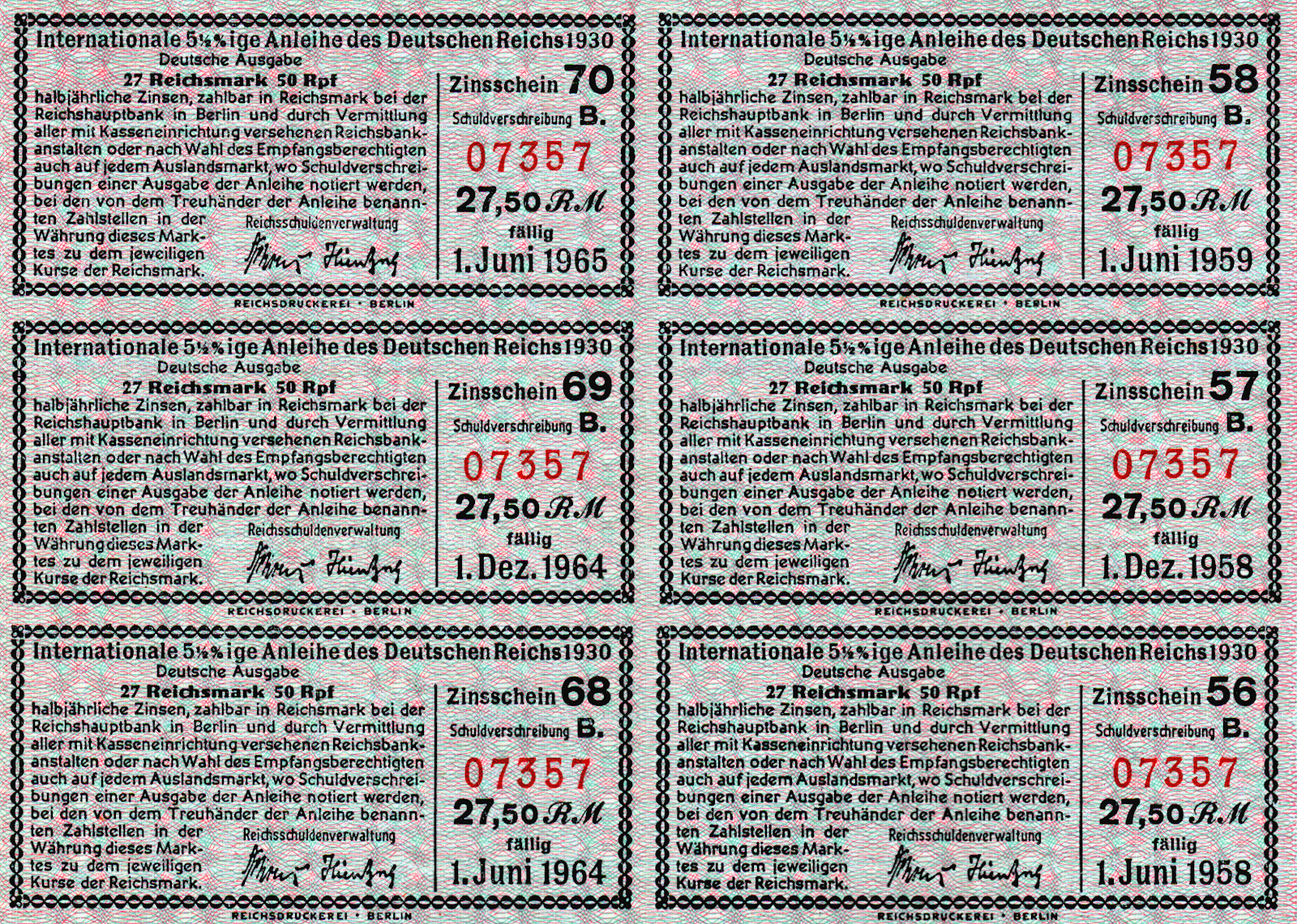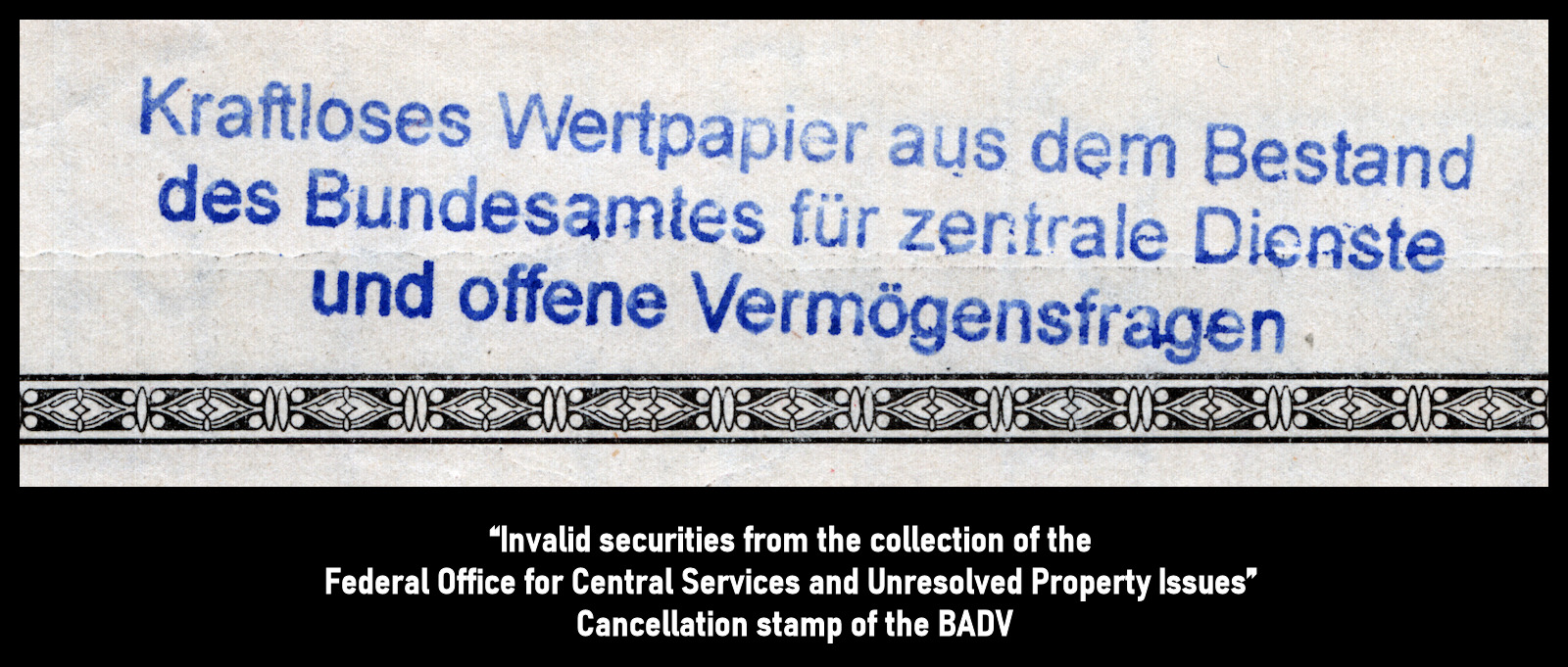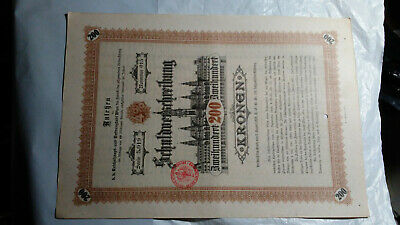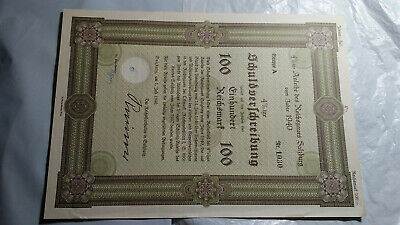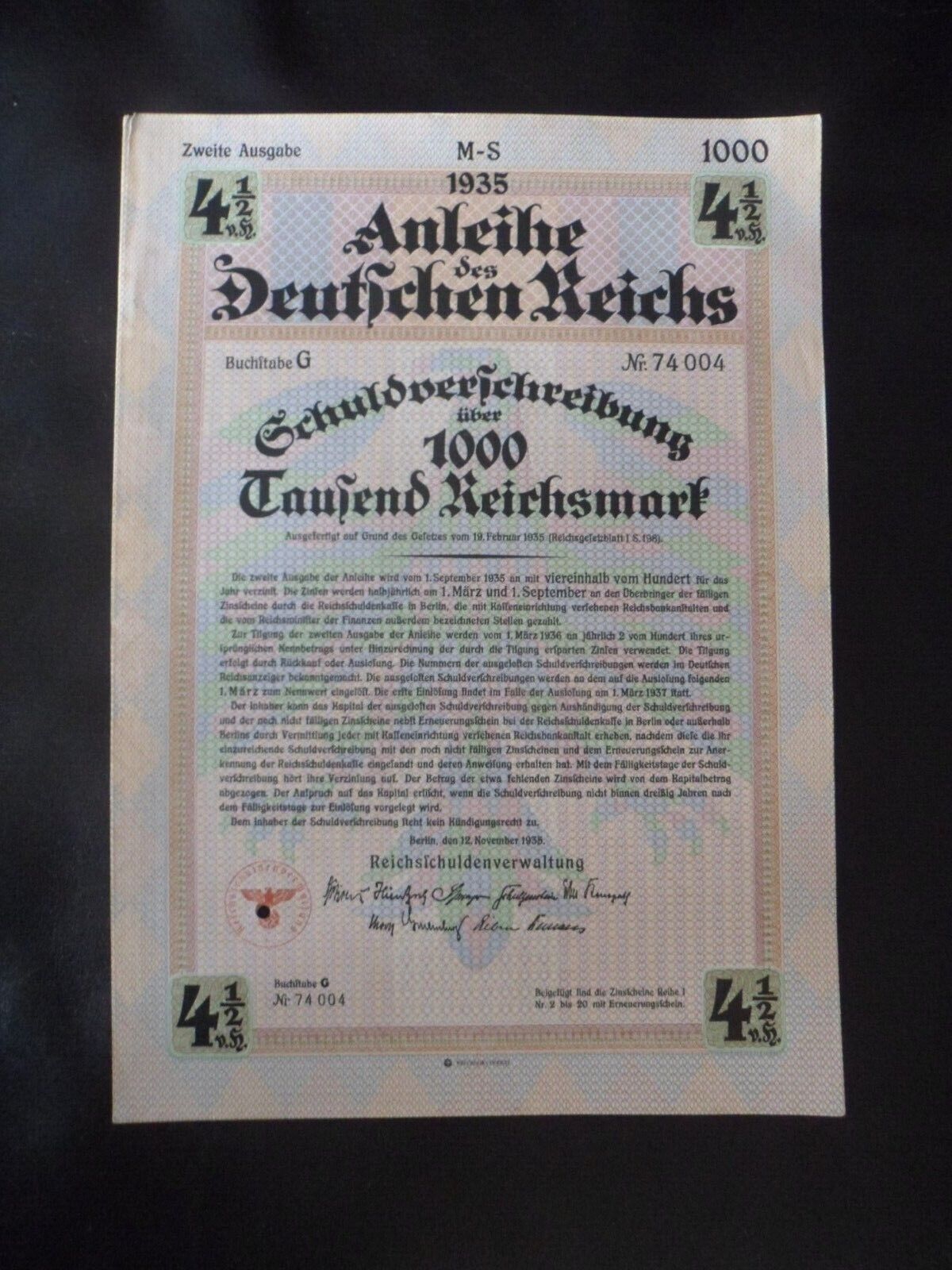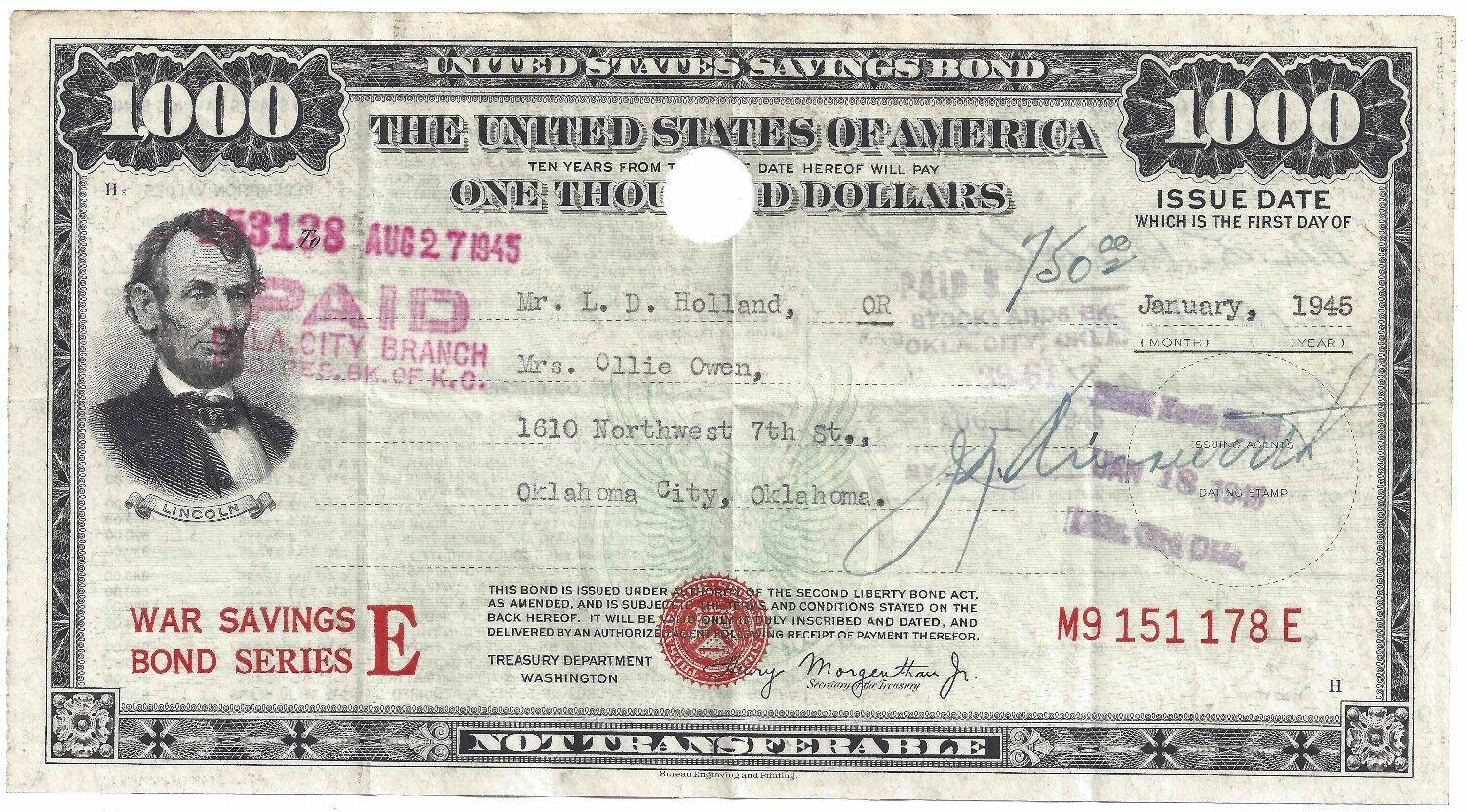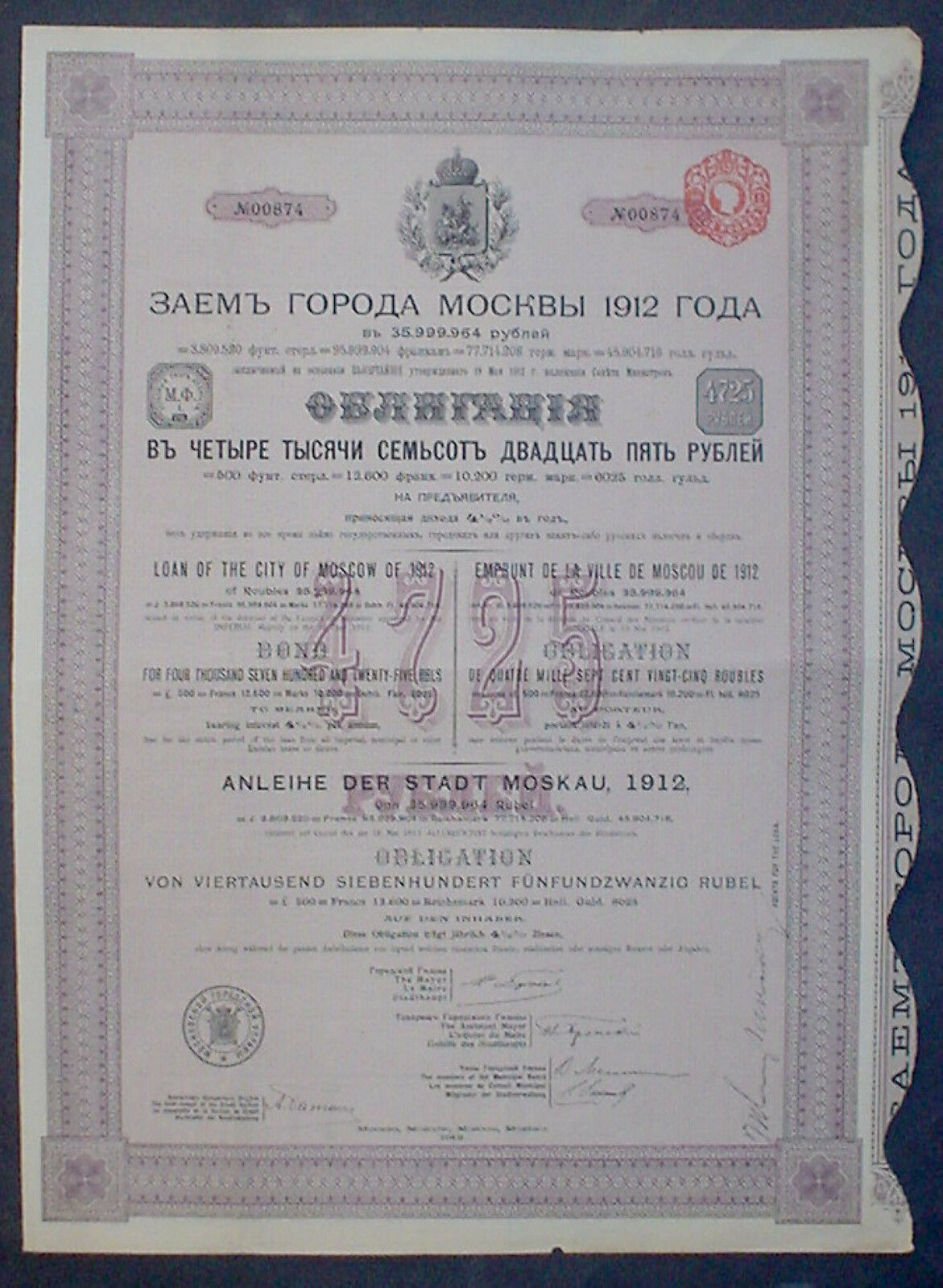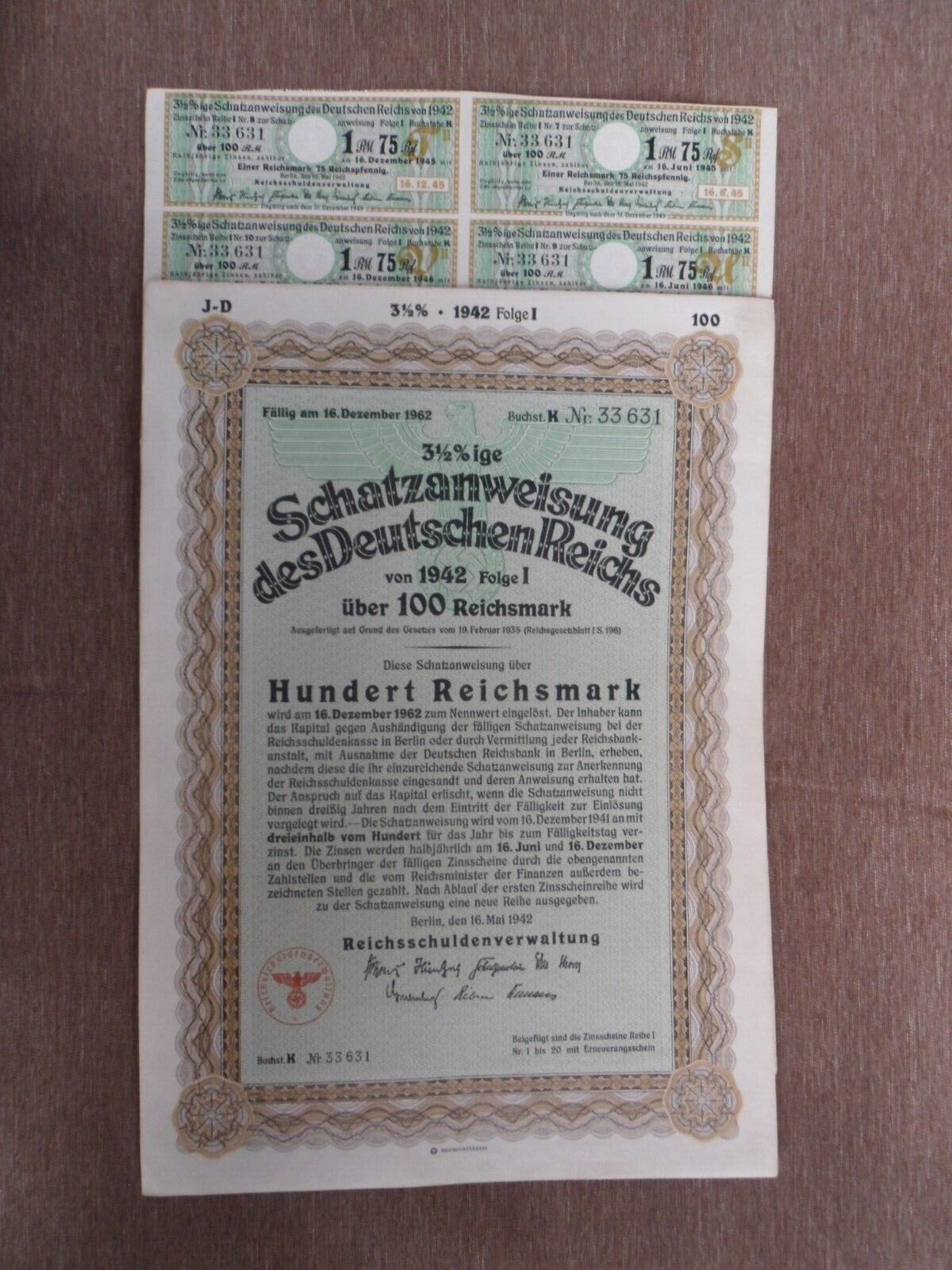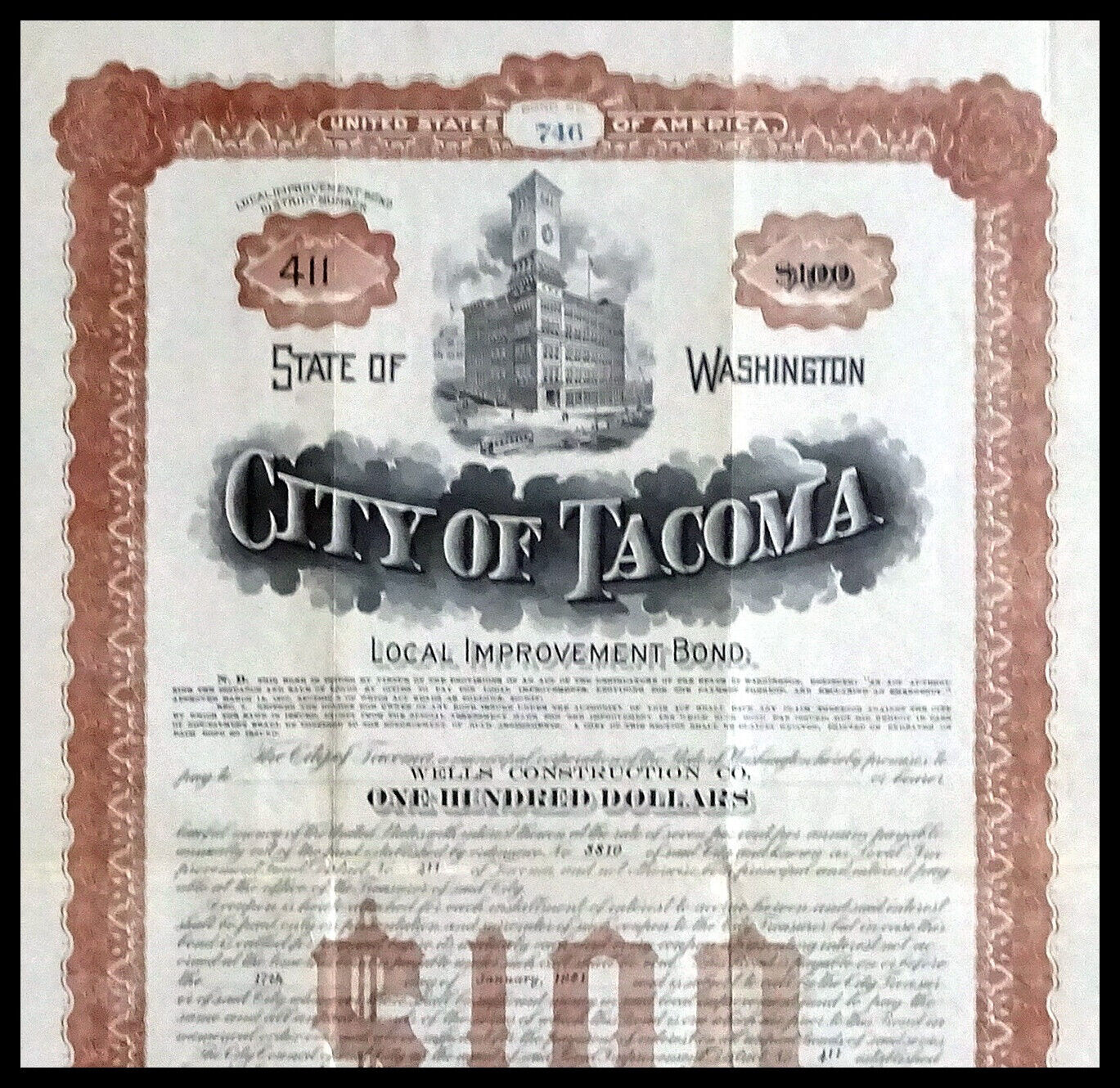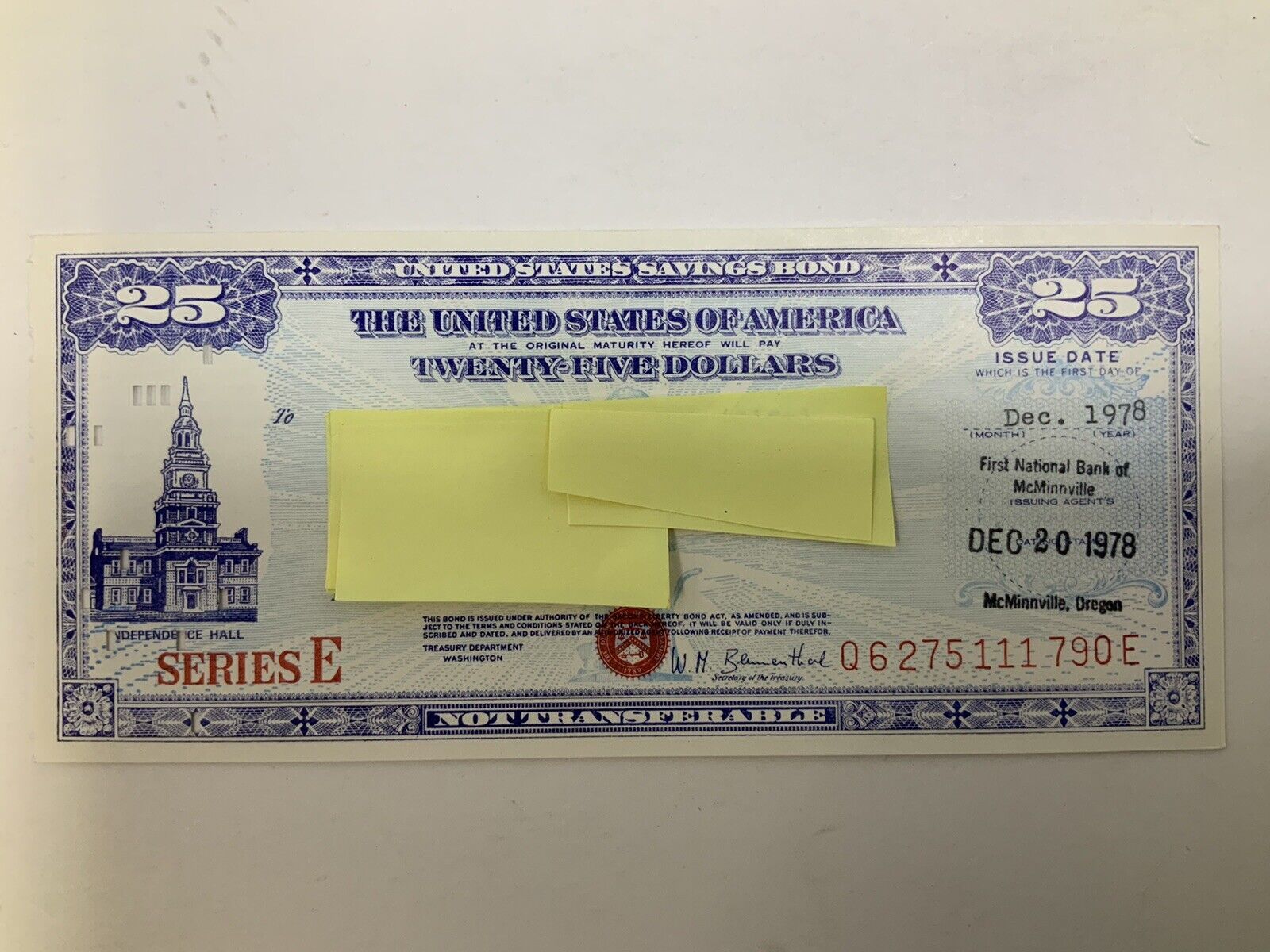-40%
1930 Germany 1000 Reichsmarks WWI Reparations Loan Bond 'Young Plan' Issue VG+
$ 5.8
- Description
- Size Guide
Description
1930 RM1000 Bearer BondGerman Government 5½% International Loan
What You See Is What You Get
Lot: G07357 - In this lot you get:
(1x) ℛℳ 1000 bond of the 0,000,000 'Young Plan' International Loan to Germany
ON OFFER:
A fine example of a bond for 1000 Reichsmarks from the German tranche of the Young Plan International loan agreement of 1930. Of the 14,034 bonds issued, fewer than 7,000 survived the
Second World War
.
Lithographed on watermarked heavy stock by the
Reichsdruckerei
(State Printing Office) in Berlin. Text is in German, English and French. The terms of the loan are printed in English on the verso of the bond. It has been punch and stamp canceled. Measures approx. 12"x17" (420x300mm). Bifold, it has ¾ page of coupons attached, numbered 30 to 70, and dated from 1 June 1945 to 1 June 1965. The piece is in VG+/F condition; overall clean with negligible foxing, light edge wear, usual midfold from vault storage, no rips or seps. Fat margins makes it well suited for framing and display.
These stunning artifacts are original first runs, not replacements, duplicates or replicas. A financial objet d'art. See scans. The front and coupons of the bond that you will receive are pictured above. Images of the verso and the cancellation stamp translation are stock photos and are provided as examples.
Of note, these bonds have an interesting story apart from their WWI history. This lot originated in the German government's auctions of the famous "
Reichsbankschatz
" (Reichsbank Treasure); a hoard of stocks and bonds from the Third Reich era that was discovered in the subterranean vaults of the former Reichsbank in East Berlin, shortly after Reunification in 1991. The cancellation stamp attests to this source. The last remaining examples of the 1930 International Loan bonds were sold by the German Federal Office for Central Services and Unresolved Property Issues (BADV) in 2008 through Dr. Busso Peus Nachf., one of oldest auction houses in Germany. The final sale of all of its pre WWII German government bonds was held by the BADV with the venerable auction house of Spink & Son of London, in 2015.
Appealing to scripophily collectors, history buffs, and educators alike, they make for an interesting addition to any First or
Second World War
collection. Authentic historical artifacts documenting turbulent times.
Shipped
FOLDED
via USPS Ground Advantage, with tracking.
YES! Will combine shipping
- First lot ships at standard rate, all other lots in same order ship free (except where noted).
Thanks for looking!
Please see my
other items
for more Third Reich, WWII, Soviet and other historical curios.
Q: What am I buying, and why would I want it?
A: This is one of the last few remaining examples of a bond from the 'Young Plan' 0 million international loan to Germany of 1930. It was the final peaceful multilateral attempt between Germany, the Allies and the United States, to come to grips with the consequences of the First World War.
While this was not a "reparations bond" per se, the Young Plan was intended to help the Germans cope with their World War I reparations debts. To the chagrin of France in particular, the Young Plan substantially reduced the amount that Germany owed, established a set repayment schedule, and provided for a generous loan package to underwrite the program. Proposed less than four months before the Great Crash on Wall Street in October 1929, the Weimar government adopted it in the face of fierce public opposition in August 1930.
The loan agreement caused a firestorm in an already chaotic Germany as segments from across the political spectrum came out in wide opposition against it. The turmoil gave an unexpected boost to the reconstituted Nazi party which went on to exploit these sentiments at the ballot box, setting Germany on a path leading to the Hitler dictatorship in January 1933. An international undertaking, the bonds were issued in the following amounts and currencies:
36,000,000 German Reichsmarks
95,250,000 U.S. Dollars
35,000,000 Belgian Belgas
2,515,000,000 French Francs
12,000,000 British Pounds Sterling
73,000,000 Dutch Florins
110,000,000 Italian Lira
110,000,000 Swedish Kronor
92,000,000 Swiss Francs
Background
In ending the First World War the Treaty of Versailles had left the question of the final total amount owed by Germany as war reparations unsettled. Article 231 of the treaty, the so-called "War Guilt Clause," committed the new Weimar Republic to full responsibility for the war, including its costs. That debt was set in 1919 at a staggering 266 billion Gold Marks (which prompted the economist John Maynard Keynes to launch a furious broadside against it).
In 1921 that amount was slashed by the Inter-Allied Reparations Commission to 132 billion Gold Marks (The 'Gold Mark' [GM] was set at the 1913 gold standard based exchange rate of 4.2M=US). Under the terms of this, the London Schedule of Payments, the German government was obligated to make an annual payment in cash of GM2 billion, and equivalents in kind payments amounting to 26% of her total exports until such time as the debt was satisfied. It is not without some reason that most Germans called it the "London Diktat."
The first installment of GM500 million due on the 1921 terms was paid by Germany with money it had printed out of thin air. This precedent established a pattern which increasingly devalued the mark, leading up to the disastrous
1922/23 hyperinflation
in the wake of the French and Belgian occupation of the Ruhr. Local reaction in Bavaria to the chaos of the rising inflation and the ignominy of the Ruhr occupation helped launch Adolf Hitler and his Munich based Nazi Party onto the world stage with their bungled Beerhall Putsch in November 1923.
The Dawes Plan 1924
The first Allied attempt to bailout Germany came in April 1924 in the form of the Dawes Plan. Named for its chief negotiator (who would share the 1925 Nobel Peace Prize for his efforts,) the American banker and future U.S. Vice president, Charles G. Dawes.
Under the Dawes Plan Germany's annual reparation payments were reduced, increasing over time only as its economy improved; the full amount to be paid, however, was left undetermined. Economic policy making in Berlin would be reorganized under foreign supervision and a new currency, the Reichsmark (RM), adopted. Allied Occupation troops would be evacuated to the West bank of the Rhine, and foreign banks would provide loans worth US0 million (US.6 billion in 2016) to Germany. The J. P. Morgan firm floated the American tranche of the loan on the U.S. market, and it was quickly oversubscribed. Over the next four years U.S. banks continued to lend Germany enough money to enable it to meet its reparation payments to countries such as France and Great Britain. These countries, in turn, used their reparation payments from Germany to service their war debts to the United States.
Funded on credit derived from the Dawes Loans Germany began to enjoy vigorous growth for the first time since the Great War. However, the reparations payments were still a drag on Germany's foreign reserves. It became apparent by 1927 that the Dawes Plan was not a workable solution. Germany once again found itself facing a foreign debt crisis.
The Young Plan 1929
The Allied response to the new dilemma, presented in July 1929 and called the Young Plan, was a vigorous reduction in the German reparations debt to GM112 billion (of which only GM36 billion was due and payable, the remainder being nominal,) and a settled 59 year term. The plan included an additional US0 million worth of international loans to Germany, the termination of Allied economic supervision, and the creation of the Bank for International Settlements (BIS) to oversee these operations. The BIS was convened in Basel, Switzerland, with members from the U.S., France, Britain, Italy, Japan, Belgium, Switzerland and Germany. During WWII it continued to function with the full participation of the belligerent states, and Germany continued to pay interest on both the Dawes and Young loans. The BIS survived the war amid accusations that it had been an Axis pawn, and operates today with 60 member institutions, serving as banker to the world's Central Banks.
In October 1929 the Wall Street Crash heralded the coming of the Great Depression, and by the middle of 1931 everyone had come to recognize the futility of trying to collect German war reparations in the midst of the global economic disaster. That June U.S. President Herbert Hoover had urged Congress to accept a one year moratorium on Allied debt repayments, and asked that their debt be forgiven outright. In December Congress approved the moratorium, but insisted on full repayment; the Ragon (D AR) amendment stated, "It is hereby expressly declared to be against the policy of Congress that any of the indebtedness of foreign countries to the United States should be in any manner cancelled or reduced..." - In any event, Germany had gained a temporary reprieve, as the 'policy of Congress' was ignored by defaulting Allies.
With the Hoover Moratorium set to expire at the end of the year, in June of 1932, an international conference (minus the U.S.) met at Lausanne, Switzerland. The accord reached at the negotiations pared German reparations to a token GM3 billion, and provided for the suspension of payments until world economic conditions improved. The ratification of the Lausanne Agreement was provisional upon the United State's cancellation of Allied debts owed to it - which was a moot point in the U.S. Congress.
Hitler Repudiates Versailles 1933
In a speech before the Reichstag on 17 May 1933 the then recently appointed German Chancellor, Adolf Hitler, denounced the Treaty of Versailles and repudiated all debts associated with it. However, in spite of the Führer's fit of fiscal pique and his refusal to make "mandated" payments, the German Reichsbank continued through the BIS, to service the interest due on the bonds of the Dawes and Young loans. It was only a year later in June of 1934, when pleading a lack of hard currency, that the Reichsbank imposed a unilateral moratorium on all payments. In response, the British government announced that it would begin impounding amounts owed to British bondholders from trade payments due Germany.
Within a month, in July 1934, the Anglo-German Transfer Agreement was reached. The accord provided for Germany to resume interest payments on the Dawes and Young loans - but only outside of the framework of the Versailles Treaty - and only on strictly bilateral terms. Similar agreements were reached with other Allied nations soon afterwards.
As became clear after the War, Hitler's staged retreat on the issue of reparations debt was compelled by Germany's
need for hard currency
and further injections of foreign capital which helped to underwrite German military expansion. Ironically, had Hitler persisted in being a deadbeat, Germany might not have been able to afford going to war in 1939.
PAID-IN-FULL
In 1953, following its post-war currency revaluation and the negotiation of the London Agreement with the western Allies, West Germany resumed interest payments on the Dawes and Young loans. After the reunification of East and West Germany in 1990, the Federal Republic of Germany undertook to pay-off its remaining obligations. In 2010 Germany made its last payment to the United States.
You will hold history in your hands.


